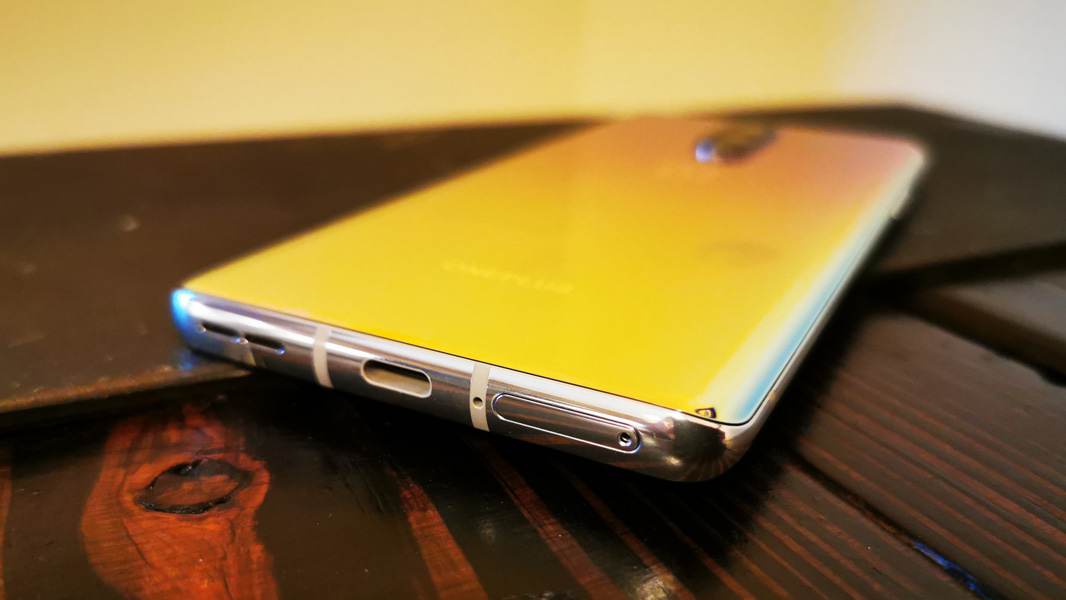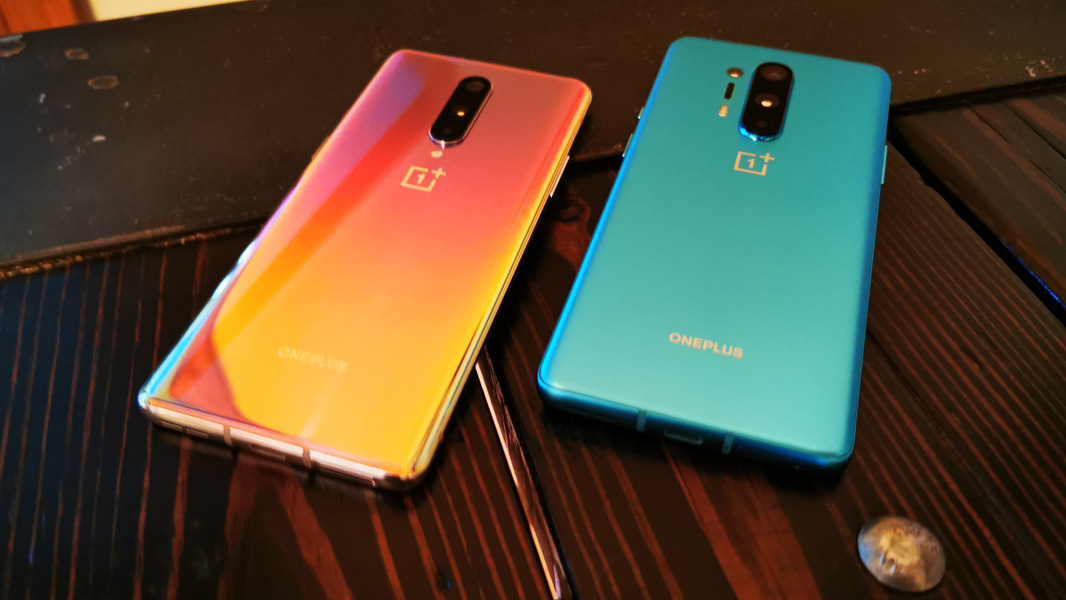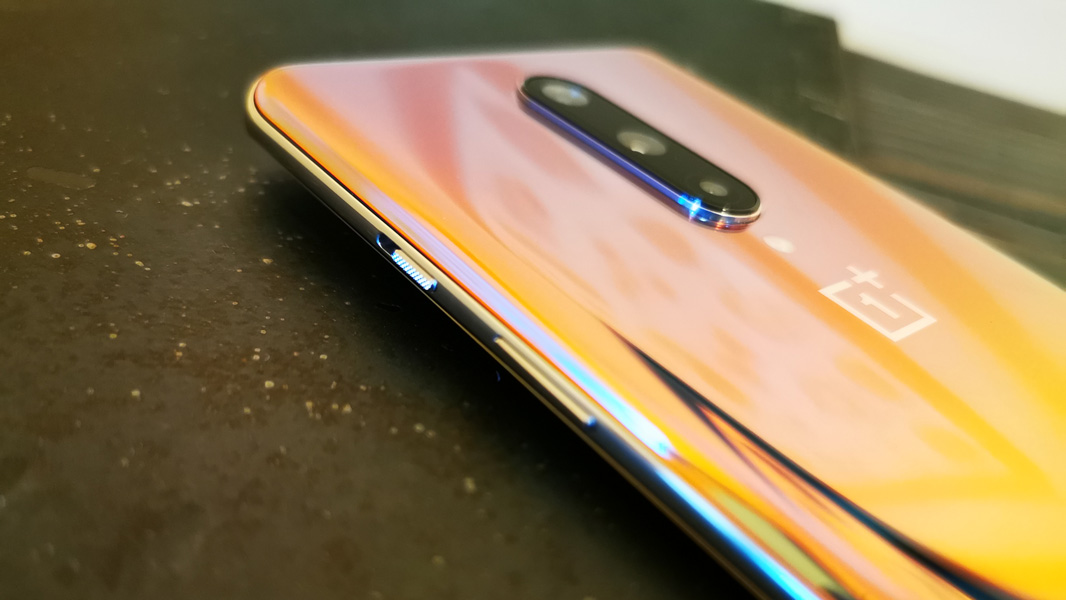OnePlus 8 First Impressions
- Paul Thurrott
- Apr 17, 2020
-
0

OnePlus is reaching for the stars with the OnePlus 8 Pro, but it is also providing an upgrade path for long-time customers: The OnePlus 8, which starts at just $699 and offers many of the same features as its more expensive sibling.
It may be a while before I can get to the OnePlus 8 as I’ll be using the OnePlus 8 Pro first, and that process will take at least a few weeks. But I don’t want to ignore the less expensive OnePlus 8, which is perhaps the more obvious choice for those who are coming off a previous OnePlus handset and looking for a more similarly-priced upgrade.
Windows Intelligence In Your Inbox
Sign up for our new free newsletter to get three time-saving tips each Friday — and get free copies of Paul Thurrott's Windows 11 and Windows 10 Field Guides (normally $9.99) as a special welcome gift!
"*" indicates required fields
But there are questions about the differences between the two handsets, and which matter most. So let’s step through this. I’ll weigh in with my opinions as we go, but you will want to evaluate the pros and cons of each change in context with your own needs, of course.

First, of course, is that price: The OnePlus 8 starts at $699, which is $200 less than the starting price of the OnePlus 8 Pro. So we’ll need to keep that number—$200—in mind as we evaluate the functional and aesthetic differences between the two devices.
That $699 will net you a gorgeous Glacial Green OnePlus 8 that ships with 8 GB of RAM and 128 GB of storage, which I find ample. But for $100 more, or $799, you can get an even prettier Interstellar Glow OnePlus 8 with 12 GB of RAM and 256 GB of storage. Two things about that unique (if Samsung-esque) color: It’s only available on the OnePlus 8, meaning that you can’t get it with a OnePlus 8 Pro, and because the body has a glass exterior, you’re going to cover it up with a protective case anyway.

What this means to me is that I’d get the $699 version (and a case). But if you want the additional RAM and storage, upgrade for that reason, not for the color.
From a form factor perspective, the OnePlus 8 is just a bit smaller (160.2 mm H x 72.9 mm W vs. 165.3 mm H x 74.3 mm W), thinner (8 mm vs. 8.5 mm) and lighter (180g vs. 199g) than the OnePlus 8 Pro. They’re so close, in fact, I’m curious why OnePlus just didn’t use the same exact form factor. It seems like having two distinctly differently-sized phones would make more sense than having two that are so close.
But they did what they did. So I can speculate that the size/weight differences are related to the display sizes—6.55 inches for the OnePlus 8 vs. 6.78 inches on the Pro—and the batteries; both are ample, but the OnePlus 8’s 4300 mAh battery is outclassed just a bit by the 4510 mAh unit in the Pro.
Speaking of displays, I would be fine with either. Both are quite similar, with curved left and right edges, very small bezels, and a camera hole punch in the upper left corner. The OnePlus 8 provides a Full HD+ (2400 x 1080, 402 PPI) Fluid AMOLED display with a 20:9 aspect ratio, whereas the OnePlus 8 Pro delivers a Quad HD+ (3168 x 1440, 513 PPI) Fluid AMOLED display with a 19.8:9 aspect ratio.

But here’s the thing. The OnePlus 8 Pro is configured for Full HD+ by default to save battery. Most users will never even notice this, let alone change it. And it’s how I’ll be using it. So the extra resolution and pixel count are less enticing then they may seem.
Both displays provide the same basic capabilities, including HDR10+ support. But the OnePlus 8 Pro display provides three key advantages over that in the OnePlus 8, none of which really matter all that much.
The first is the refresh rate: Where the OnePlus 8 provides a 90 Hz display, the OnePlus 8 Pro takes it to 11, or rather to 120 Hz. And … whatever. I find the refresh rate to be a subtle effect on either phone, and not something most would notice in day to day use. The OnePlus 8 Pro also provides Adaptive Display capabilities, which don’t work very well anyway, and a Vibrant Color Effect Pro which provides more color pop during video playback. I happen to like that latter feature, but it wouldn’t factor into a purchase decision.

The core components of both phones are (mostly) identical: Both provide the future-proof Qualcomm Snapdragon 865 processor with an Adreno 650 GPU, 8 or 12 GB of RAM, and 128GB or 256GB of fast UFS 3.0 solid-state storage. But the RAM on the Pro is faster LPDDR5 RAM, while the non-Pro ships with LPDDR4X RAM; LPDDR5 is apparently a bit more battery-friendly as well.
Both handsets support 5G via the Qualcomm X55 chipset plus worldwide 4G/LTE, and both provide identical Wi-Fi 6, Bluetooth 5.1, and NFC functionality.
Both phones support OnePlus’s superior Warp Charge 30T Fast Charging capabilities, but only the Pro supports Qi wireless charging, which can hit an astonishing 30-watts if you use the OnePlus Warp Charge 30 Wireless Charger.
The biggest difference between the two handsets, perhaps, comes via the camera systems, and it’s here, think, that real-world testing will be the most essential.
The OnePlus 8 delivers a triple-lens camera system with a 48 MP main (wide) lens with optical image stabilization (OIS) and electronic image stabilization (EIS), a 16 MP ultra-wide lens with a 116-degree field of view, and a 2 MP macro lens.
The OnePlus 8 Pro has a quad-lens camera system with a 48 MP main (wide) lens with OIS and EIS, a 48 MP ultra-wide lens with a 120-degree field of view, an 8 MP telephoto lens with 3X hybrid optical zoom and 30X digital zoom, and a 5 MP color filter lens that seems semi-pointless.
What’s missing from the 8 is a telephoto lens and any form of optical zoom, so long shots are going to be dicey. Plus the ultra-wide lens on the 8 Pro provides the same level of detail as does the main lens, whereas the version of the 8 does not. And that main sensor on the 8 Pro is newer and presumably more capable than the version in the OnePlus 8. (Oddly, the 8 Pro does not have the macro lens provided by the OnePlus 8, but I’d never use that.)
In the good news department, the front camera—a 16 MP shooter with EIS and a fixed focus—is identical between the two models, as are their respective video capabilities: Both support 4K video at 30 or 60 fps, 1080P video at 30 or 60 fps, Time-Lapse (1080P at 30 fps or 4K at 30 fps), and Super Slow Motion (1080p at 240 fps or 720p video at 480 fps).
Like previous generation OnePlus handsets, the OnePlus 8 is “water-resistant,” but there’s no official IP rating. The OnePlus 8 Pro, meanwhile, is the first OnePlus to get an IP rating, and it’s rated as IP68, meaning that it is “dust resistant” and can be immersed in 4.5 feet of freshwater for up to 30 minutes. This is not a concern for me.
Obviously, the software is identical across both devices, with the optimized OxygenOS, Dark Mode 2.0, and dynamic wallpapers, and a distinct lack of crapware.
Looking over this list, I see only one area in which the OnePlus 8 Pro seems to have a distinct advantage among the criteria I care about: The camera system. But I will need to see whether or how the lack of a telephoto lens and an inferior ultra-wide lens impact things in the real world. That’s what the review process is all about, even in these weird times.
Anyway, I think that covers the differences, but if you notice anything missing, please let me know.
Conversation
There are no conversations